A Virtual Exhibition Tour of Fanning the Flames at Hoover Tower
Visit the Fanning the Flames exhibition from the comfort of your home in this video tour led by Kaoru Ueda and Marissa Rhee.
Watch NowA free teacher’s guide that teaches students visual media literacy by utilizing primary source documents from the Hoover Institution Library & Archives is a new resource courtesy of a SPICE-Hoover collaboration. Stanford Program on International and Cross-Cultural Education (SPICE) Curriculum Specialist Waka Brown has led the crafting of this new curriculum that engages students in the analysis of primary sources from the website, Fanning the Flames: Propaganda in Modern Japan, which features Japanese propaganda during the Meiji Era (1868–1912) through to the Pacific War (1941–45). Brown developed activities that introduce students to the importance of understanding and interpreting propaganda and engage them in a critical analysis of the primary sources. The teacher’s guide was made possible with a grant from the Japan Fund of the Freeman Spogli Institute for International Studies.
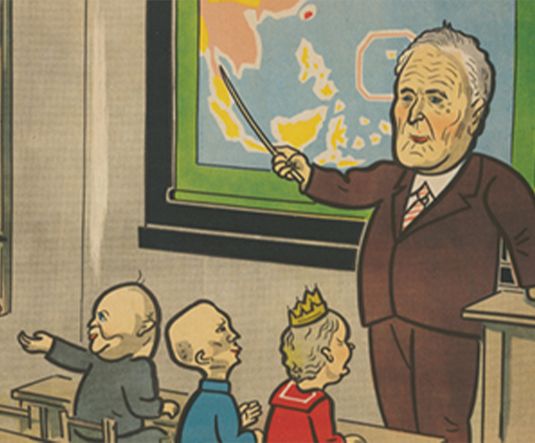
From kamishibai (paper plays) performances to talks by some of the leading scholars in the field, these videos provide new perspectives on collections at the Hoover Institution Library & Archives.
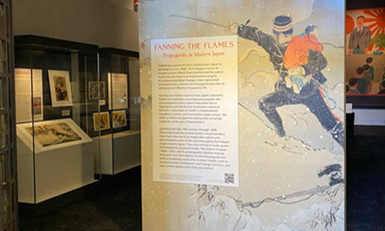
Visit the Fanning the Flames exhibition from the comfort of your home in this video tour led by Kaoru Ueda and Marissa Rhee.
Watch Now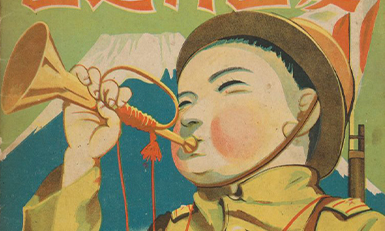
Listen to a rare recording of the Japanese Patriotic Marching Song as we flip through the 1939 patriotic songbook that illustrates the lyrics. This song was famously written when the government held a contest to write a marching song in 1937.
Watch Now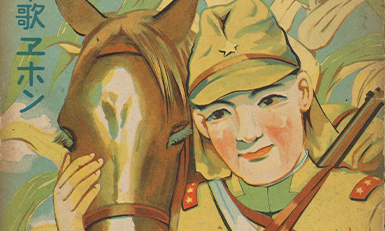
Listen to a rare recording of the Japanese song My Beloved Horse as we flip through the 1939 patriotic songbook that illustrates the lyrics.
Watch Now
Discover the ways in which the Sino-Japanese War of 1894-95 triggered a competitive volley of attention, which has lasted for more than a century, toward relics of war that symbolized both victory and defeat.
Watch now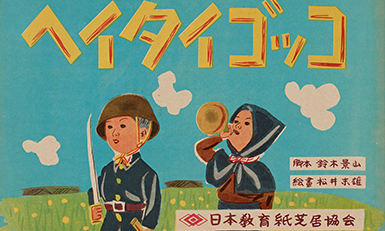
This animation is a modern interpretation of the 1944 kamishibai Soldier Play (Heitai gokko), a paper play that targeted children during World War II from the Kamishibai Collection at the Hoover Institution Library & Archives.…
Watch now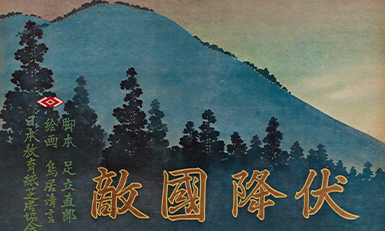
This professionally performed kamishibai features voice actor Ichirō Kataoka as narrator of the 1944 paper play Enemy Surrender (敵国降伏 Tekikoku kōfuku), a retelling of the classic origins of kamikaze, the divine wind that saved Japan from invasion…
Watch now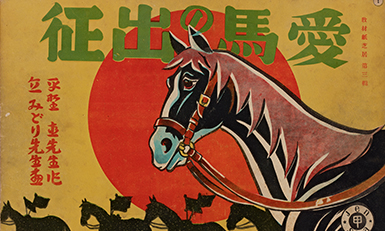
Professional voice actor Ichirō Kataoka narrates the 1941 kamishibai My Beloved Horse Joins the Army (愛馬の出征 Aiba no shussei), a paper play made during World War II promoting sacrifice for the nation…
Watch nowEngage with our collections in fun and innovative ways through virtual jigsaw puzzles and other online activities.